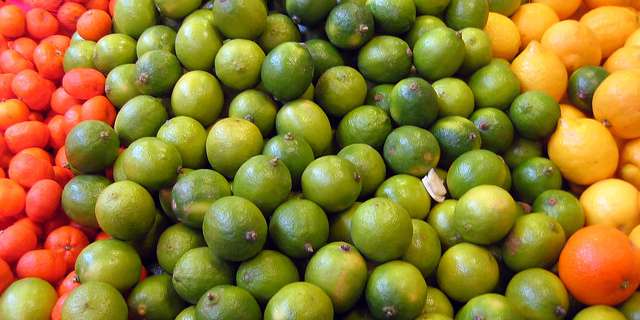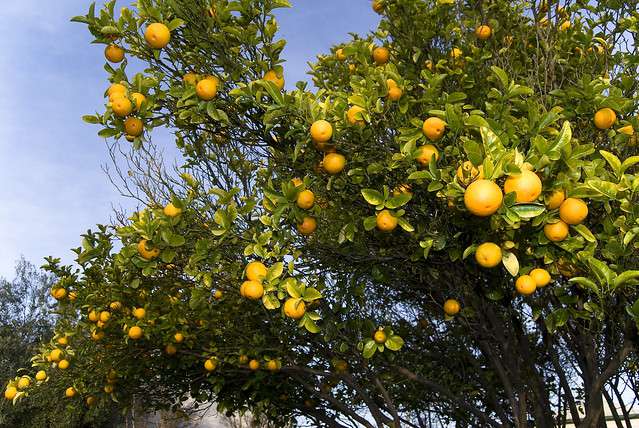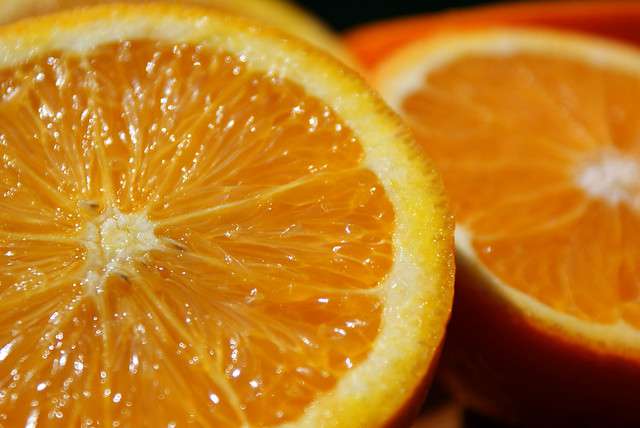
Citrus color plays an important role in quality perception of various citrus fruits. Image Source: Flickr user Ruth Hartnup
Citrus color has always played an important role in food quality and control. I can recall countless times sifting through the citrus options of the produce section looking for the highest quality fruits to add to my basket. Although I may be looking at size and shape, the number one factor in my selection of oranges, lemons, limes, or grapefruits always revolves around citrus color. Each citrus fruit has its own unique color that is most desirable to the consumer. Whether it is the deep reddish-orange hues of the orange or the bright green and glossy hues of lime, buyers use citrus color as a gauge for ripeness and flavor before the fruit is ever prepared or consumed.
Attention to citrus color occurs long before the fruits ever make it to the supermarket shelves. Due to the nature and composition of agricultural products, citrus fruits are often picked prior to their peak stages of ripeness. Post-harvesting processes are then carefully analyzed to ensure that the product reaches the most desirable color by the time it reaches the consumer. Spectrophotometers are the most commonly used form of instrumentation from pre-harvest to post-harvest analysis, and these tools provided quantifiable information on citrus color to ensure the most appropriate results.
Spectrophotometers in pre-harvest color monitoring
The USDA (United States Department of Agriculture) has created citrus color standards which warrant proper quality and ripeness guidelines for citrus based produce. These guidelines measure quality based on a visual comparison model between product samples and plastic colored tubes. This method is not only subjective based on human perception and analysis, but requires that testing be done post-harvest in properly lit and controlled laboratory settings.
Spectrophotometric technology provides objective and quantifiable measurements of citrus color that can be obtained in nearly any setting. Advanced spectrophotometers allow for portable and durable instrumentation that is designed to measure samples throughout the various stages of the ripening process, both pre-harvest as well as post-harvest. Citrus color measurements can be obtained with controlled lighting and a pre-calculated angle of observation, which allows for the most accurate representation of color which most closely resembles the way the human eye perceives color.

Spectrophotometers monitor citrus color throughout the various stages of processing including both pre-harvest and post-harvest analysis.
Image Source: Flickr user rafael-castillo


